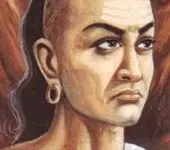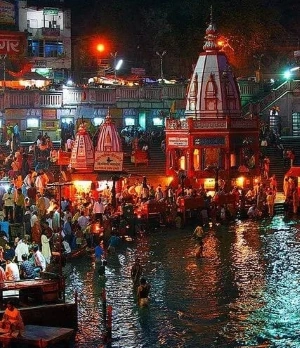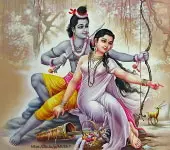Janaka's Spiritual Evolution - From Jnana to Bhakti
In the vast tapestry of our Puranas and Itihasas, there are tales that resonate deeply with spiritual seekers, offering profound insights into the nature of existence and the path to enlightenment. One such story is that of King Janaka and his encounter with Sriram Ji, a momentous event that marked a transition from pure knowledge to pure devotion.
The Origins of Mithila: A Journey Through Time
Let's journey back to the ancient kingdom of Mithila, ruled by King Janaka. But have you ever wondered how Mithila got its name? Legend has it that Mithila was originally known as Vaijayanta Nagara, until it was renamed after King Mithi, the son of King Nimi. Nimi's story is tinged with mystique—he lost his body due to a curse from Sage Vasishta, and his body and life force became separated. Despite efforts by sages to reunite them through the power of Yajna, Nimi declined, leading to the creation of a boy named Mithi through the churning of his body. This act of creation earned him the name Mithi, derived from 'Mathana' or churning. Thus, Vaijayanta Nagara transformed into Mithila, a land steeped in spiritual significance, where the lineage of its kings, known as Mithileshas, were revered as great yogis and realized beings.
The Spiritual Evolution of King Janaka
Now, let's focus on King Janaka himself, a figure renowned for his wisdom and spiritual prowess. As a Brahma jnani, or knower of the ultimate reality, Janaka navigated the world with profound understanding, yet still indulged in the pleasures befitting his royal status. However, everything changed when he laid eyes on young Sriram Ji at his daughter's swayamvara. In that moment, Janaka's heart swelled with devotion, transcending the boundaries of mere knowledge to embrace the pure essence of bhakti, or devotion.
From Jnana to Bhakti: The Ultimate Spiritual Journey
The transition of King Janaka from a Brahma jnani to a devout devotee symbolizes a profound shift from intellectual understanding to heartfelt devotion - a journey echoed in the teachings of Sanatana Dharma. While jnana, or knowledge, can illuminate the path to spiritual realization, it is bhakti that leads us to the ultimate truth. Janaka's transformation serves as a poignant reminder that true wisdom lies not only in understanding the divine but in surrendering to its infinite love.
Learnings:
- Spiritual evolution is a journey from knowledge to devotion.
- Bhakti transcends intellectual understanding to embrace heartfelt devotion.
How to Conduct Yourself Based on These Learnings:
Embrace the path of bhakti by surrendering to the divine with humility and love.
Quiz
What other name is Ayodhya known by?Recommended for you
What if you are not able to find a Guru for Mantra sadhana?
 Click here to know more..
Click here to know more..
Arthashastra of Kautilya

Learn about the contemporary relevance of the Arthashastra of Kautilya.....
Click here to know more..Narmada Kavacham

yam' yam' vaanchhayati kaamam' yah' pat'het kavacham' shubham . tam' tam' praapnoti vai sarvam' narmadaayaah' prasaadatah' ......
Click here to know more..
English Topics
Ramayana
Click on any topic to open
- 50 Janaka's Spiritual Evolution - From Jnana to Bhakti
- 49 Dasharatha's Grief Decoded
- 48 Shiva burned Kamadeva at Chhapra, Bihar
- 47 Motherhood brilliance - Kausalya Supraja Rama
- 46 Bala and Atibala Mantras - Sriram Ji will unfold their superpower
- 45 Dasharatha Pleads With Vishwamtra Not To Take Away Young Sriram Ji
- 44 Abandoning Of Sita Devi - Is It Justifiable?
- 43 Vishwamitra Wants To Take Young Sriram Ji With Him
- 42 Position Of Sages In Ancient Bharata
- 41 Horoscope of Sriram Ji
Please wait while the audio list loads..
30
Ganapathy
Shiva
Hanuman
Devi
Vishnu Sahasranama
Mahabharatam
Practical Wisdom
Yoga Vasishta
Vedas
Rituals
Rare Topics
Devi Mahatmyam
Glory of Venkatesha
Shani Mahatmya
Story of Sri Yantra
Rudram Explained
Atharva Sheersha
Sri Suktam
Kathopanishad
Ramayana
Mystique
Mantra Shastra
Bharat Matha
Bhagavatam
Astrology
Temples
Spiritual books
Purana Stories
Festivals
Sages and Saints
